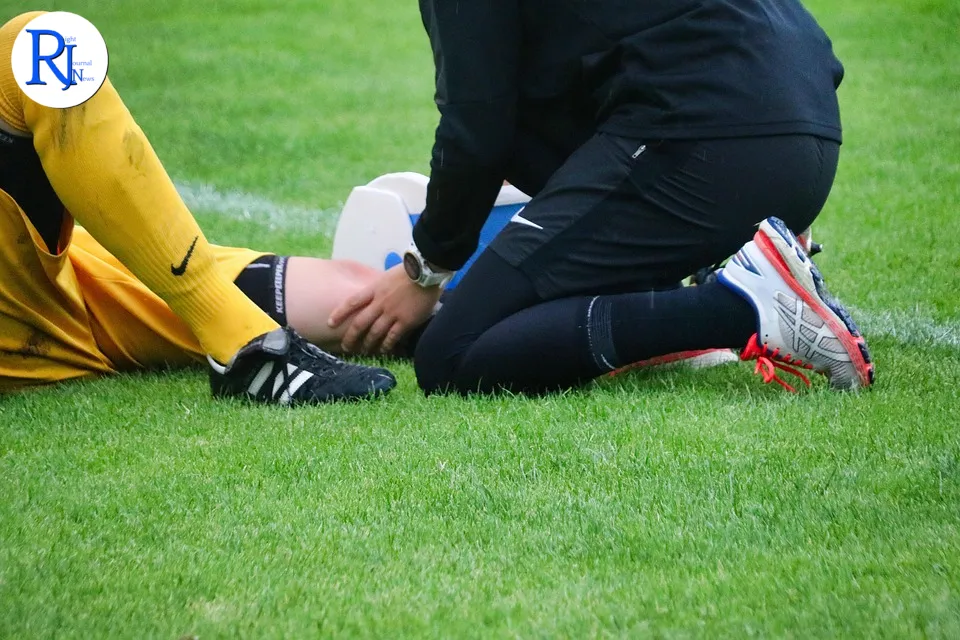A new paper has linked common lower?limb injuries in professional football to osteoarthritis later in life, adding fresh urgency to debates about player welfare and treatment choices. The research, reported on Wednesday, 22 October 2025, found that retired UK male professional players who sustained foot or ankle injuries during their careers were more likely to report osteoarthritis after retirement. Those who received routine cortisone injections to manage those injuries reported osteoarthritis at even higher rates. The findings underscore a long?standing concern in sports medicine: decisions made to keep players on the pitch may shape joint health decades later. While the study does not prove causation, it points to clear associations that call for tighter injury management, more cautious use of injections, and better monitoring of long?term joint outcomes.
Context and timing
The paper focuses on retired male professional footballers from the UK and surfaced publicly on 22 October 2025. It arrives as clubs and governing bodies continue to examine how treatment protocols, fixture congestion, and training loads affect long?term health. The timing also aligns with wider scrutiny of post?career outcomes in contact and high?intensity sports, where cumulative impacts and repeated injuries can leave a lasting mark.

Injury histories that track with osteoarthritis risk
Researchers reported that retired players who sustained foot or ankle injuries during their careers were more likely to report osteoarthritis in retirement than those without such injuries. This association reflects a pattern that sports medicine specialists have long discussed: joint injuries can alter biomechanics, trigger inflammation, and accelerate cartilage wear. In football, the foot and ankle absorb repeated impacts from sprints, tackles, twists, and landings. When injuries occur, the joint can lose stability or congruence, which may raise the chance of osteoarthritis over time.
The study relies on retired players’ reports of osteoarthritis, which highlights an important nuance. Self?report can capture symptoms and diagnoses players experienced, but it may not align perfectly with imaging or clinical assessments. Even so, the consistent link between injury and later joint problems matches established knowledge that osteoarthritis risk rises after significant joint trauma. The finding supports calls for robust injury prevention programmes, careful return?to?play decisions, and long?term follow?up for players with lower?limb injuries.
Cortisone injections under fresh scrutiny
The paper also found that players who received routine cortisone injections for their foot or ankle injuries were even more likely to report osteoarthritis in retirement. Clinicians use cortisone injections (corticosteroids) to reduce inflammation and pain inside a joint, often to help a player manage symptoms and continue training or competing. In the short term, these injections can provide relief. However, questions remain about repeated use, especially in weight?bearing joints that face high forces in elite football.
Sports medicine guidance generally advises careful use of corticosteroid injections, with attention to frequency and timing. Research has raised concerns that repeated injections could affect cartilage health in some contexts, although evidence varies by joint, dose, and patient profile. The new paper does not demonstrate that injections cause osteoarthritis, but the association strengthens arguments for stricter protocols. Clubs and medical teams face pressure to balance short?term performance with long?term joint preservation, and these findings add weight to a more conservative approach.
Why foot and ankle injuries matter in professional football
The foot and ankle act as the foundation for movement. In elite football, players cut, pivot, strike the ball, and contest aerial duels under high loads. Common injuries include sprains, fractures, tendon issues, and cartilage lesions within the ankle joint. Even when players return to action, residual instability or subtle stiffness can change how forces travel through the joint. Over years, those altered patterns can worsen wear on cartilage and surrounding tissues.
This mechanical reality helps explain why injury history can shape osteoarthritis risk. Experts often recommend targeted strength and neuromuscular training, balance work, and tailored footwear or orthoses to support recovery and reduce reinjury. The study’s findings may encourage wider adoption of such measures and a stronger emphasis on full functional recovery before players return to play—especially after complex foot or ankle injuries.
Implications for clubs, leagues, and player unions
The associations outlined in the paper may prompt clubs and governing bodies to review treatment pathways. Teams can standardise records of injections and create alerts when a player approaches thresholds that warrant extra caution. Medical departments can expand shared decision?making with players, spelling out potential long?term risks and alternative options, including rest, staged load management, or different therapies.
Leagues and player unions may also push for longitudinal health monitoring that continues after retirement. Better data on pain, function, and imaging outcomes can help clinicians refine practice and guide future rules on match scheduling and substitutions. The new evidence strengthens the case for investing in prevention, including pitch quality measures, footwear research, and conditioning programmes that protect the foot and ankle under match?speed loads.
What the findings do—and do not—say
The paper identifies clear links between injury, cortisone use, and reported osteoarthritis, but it does not establish causation. Other factors could play a role, such as genetics, total minutes played, playing position, surgical history, or previous injuries to knees and hips that change movement patterns. Self?reported osteoarthritis captures lived experience but may not reflect the full clinical picture. Future studies can improve on this by combining player reports with medical records, imaging, and objective function tests.
Still, the patterns align with established clinical understanding. Joint injuries often increase osteoarthritis risk, and high?intensity sports can magnify that risk when players rush back or rely on symptom?suppressing treatments. The study adds valuable evidence from a well?defined population: retired UK male professionals, whose training loads and match demands exceed those of recreational players.
Safer pathways for pain management and return to play
Clubs can adopt multimodal pain management plans that do not rely on repeated steroid injections. Options may include targeted rehabilitation, manual therapy, bracing, and carefully structured load reduction. Where injections remain appropriate, clinicians can set clear limits, build in rest after procedures, and monitor joint response before green?lighting a return. Education matters too: when players understand the trade?offs, they can make informed choices that protect their long?term health.
Return?to?play decisions should prioritise objective criteria, not just symptom relief. Strength benchmarks, balance and hop tests, and sport?specific movement assessments can reduce the risk of compensations that stress the joint. Aligning medical decisions with performance goals can reduce reinjury, preserve cartilage health, and, as this study suggests, lower the chance of osteoarthritis in later life.
Wrap?up
This new paper adds timely evidence that injury history and routine cortisone use in professional football correlate with higher reports of osteoarthritis after retirement. While the research does not claim a causal link, it highlights risks that clubs, leagues, and players can address now. Stronger prevention, careful use of injections, and data?driven return?to?play practices can help protect the foot and ankle—the sport’s most heavily loaded joints. Better long?term monitoring will also give the game clearer answers about what works and what does not. As football evolves, the priority remains clear: keep players fit for the next match without compromising their joints for the years that follow.

